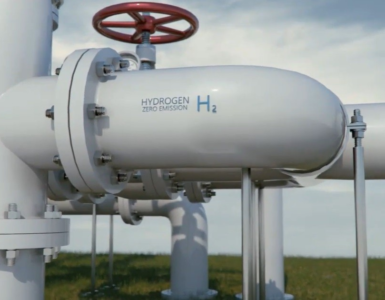Spain – gas network is ready to operate with up to 20% renewable hydrogen with a minimum investment for its adaptation.
The existing gas infrastructure is prepared to operate with up to 20% hydrogen with some modifications. This is the main conclusion of the CavendisH2 project, a study promoted by the Spanish Gas Association, Sedigas , with the collaboration of Bip Consulting to analyze the viability of using the current gas network to supply different types of renewable gases.
This capacity is the result of the high hydrogen operation compatibility of the available network thanks to its modernity, as well as the high quality standards applied in its construction, operation and maintenance. Already in the long term, and in a scenario of elderly percentage of ‘blending’ -process of mix of different gases-, The study indicates that it would be necessary to undertake further actions to ensure compatibility total of materials and beef up the ability of some items operational.
Considering a scenario in which the assets of all gasified municipalities will be adapted in our country and HE vehicular the same demand energy of today in day, the investment required to adapt the infrastructure for increasing scenarios of use of hydrogen renewable, from he 5% to the twenty% in volume, would reach a amount of between 92 million euros and 703 million euros, respectively. Assuming the largest of them, this would represent 2% of the annual regulated costs of the gas system in an estimated amortization period of 20 years of life. useful.
🔥 What about we co-host a webinar? Let's educate, captivate, and convert the hydrogen economy!
Hydrogen Central is the global go-to online magazine for the hydrogen economy, we can help you host impactful webinars that become a global reference on your topic and are an evergreen source of leads. Click here to request more details
CavendisH2 also sets out a series of additional measures in the regulatory, administrative and technology and infrastructure promotion fields that would place Spain in a more favorable position for the development of renewable gases. Along these lines, it recommends the development of an ambitious regulatory framework and binding objectives aligned with the production potential of renewable gases in
Spain, as well as the simplification and streamlining of administrative processes for the implementation of hydrogen projects, without overlooking the adoption of measures that favor he development of the technology and facilitate the investment in the necessary infrastructures.
It is necessary to reinforce the role of renewable gases in the energy transition
Sedigas advocate by guarantee that the gases renewable adopt a paper further relevant in the energy transition based on the availability of the infrastructure and the reasonableness of the associated investments required. Although this sense of opportunity is already echoed in Europe, with the REPowerEU Plan, transferring it to Spain would require establishing more ambitious objectives, especially for biomethane in the Plan. National Integrated of Energy and Climate (PNIEC) and the Strategy of Long Term Decarbonization (ELP).
The objectives defined in the different policies published at the national level establish a roadmap between 2020 and 2050 that involves a 350% increase in the use of renewable energies – including renewable gases – in final consumption and a 94% reduction in use. of fossil fuels in final consumption. Decarbonization goals that imply important changes for the generation of energy as in the infrastructures to transport it to all segments of consumption.
As the Cavendis H2 study highlights, decarbonizing technologies are already on the table in most segments, although their future relevance and speed of adoption are the main uncertainties. The long-term impact of the competitiveness of our production model is at stake. This means that the principle of technological neutrality cannot be disregarded as a central element on which the planning of our future energy model must pivot.
Joan Battle, president of Sedigas, explains:
Spain account with two big tricks for to incorporate he hydrogen renewable to the energy model of our country: a elevated ability of production given the natural conditions of renewable resources and a modern and quality gas network.
“Talk later of a advanced infrastructure gasman who account with 7 floors of regasification, 6 connections international, further of 14,000 km of grid of transport, 80,000 km of grid of distribution and near of 8 millions of Points of supply, and that ought be a element clue for enable and favor he deployment of renewable gases to accelerate the decarbonization.”
About Sedigas
Sedigas is the association that has represented companies in the Spanish gas sector since 1970 that carry out their activity in the fields of production, transportation, distribution and marketing of natural gas and renewable gases. Its mission is to promote the use of these as fundamental members of a sustainable energy matrix, while guaranteeing the competitiveness and security of energy supply for Spain.
READ the latest news shaping the hydrogen market at Hydrogen Central








